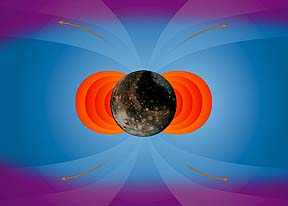This is an artist's conception of the magnetosphere of Ganymede.
Click on image for full size
Windows Original
Magnetosphere of Ganymede
Did you know that some of the planets and moons can be magnetic? Earth is! The Galileo spacecraft found out that a moon of Jupiter, Ganymede, is magnetic too!
You might also be interested in:
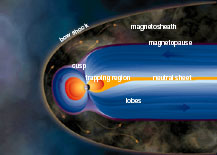
The Earth has a magnetic field with north and south poles. The magnetic field of the Earth is surrounded by the magnetosphere. The magnetosphere keeps most of the particles from the sun, carried in solar
...more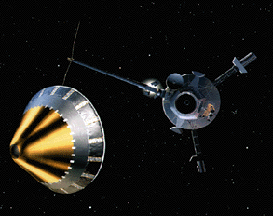
Galileo was a spacecraft that orbited Jupiter for eight years. It made many discoveries about Jupiter and its moons. Galileo was launched in 1989, and reached Jupiter in 1995. The spacecraft had two parts.
...more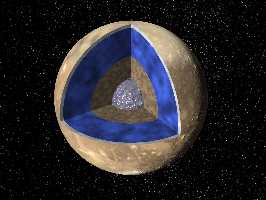
The picture on this page shows what the inside of Ganymede looks like. Scientists have made this model based on measurements by the Galileo spacecraft. The picture shows a samll core of metal (silver),
...more
Galileo is a spacecraft that has been orbiting Jupiter for eight years. On September 21, 2003, Galileo will crash into Jupiter. It will burn up in Jupiter's atmosphere. The crash is not an accident! The
...more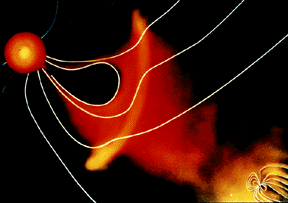
The Sun is huge. It has an effect on things even if they are far from the Sun. The "bubble" where the Sun has an effect on things is called the heliosphere. It goes even past Pluto! The place
...more
Amalthea was discovered by E Barnard in 1872. Of the 17 moons it is the 3rd closest to Jupiter. Amalthea is about the size of a county or small state. Amalthea is named after the goat in Greek mythology
...more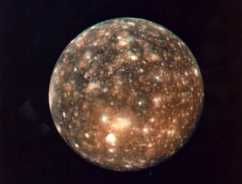
Callisto was first discovered by Galileo in 1610. It is the 2nd largest moon in the solar system, and is larger than the Earth's moon. It is about as big as the distance across the United States. Callisto
...more


